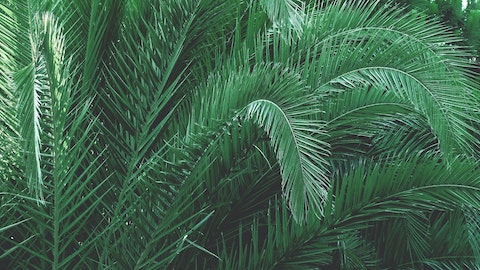Palm Nutrient Deficiencies
As with you, your lawn and all your shrubs, proper nutrition is essential for palm trees. This post will give you the “bare-bones” information regarding palm tree nutrition. We have compiled the most common palm nutrient deficiencies found in palm trees in our area. I hope placing this knowledge in the hands of you, the homeowner, will help with prevention, early diagnosis and treatment of these problems.
Magnesium, Iron & Nitro
Symptoms: Low magnesium, iron or nitrogen can cause a multitude of problems for your palms. Some of these include severe yellowing, spotting and wilting.
Treatment: Initial nutrient drenches can fix a deficiency. Maintaining proper fertilization will keep your palms healthy in the future. What is proper fertilization? That depends on the type, size and location of the palm and the soil composition around it.
Magnesium Deficiency
Symptoms: New leaves emerge with long dead streaks. When the palm nutrient deficiencies progresses, the new leaves emerge withered, yellow and dead. Have you heard of “frizzle top” before? That is the name given to a Mn deficiency due to the “frizzled” appearance of new growth. With severe Mn deficiencies, all healthy growth stops and only dead leaflets emerge. Complete palm death will soon follow. A manganese deficiency can be caused by a lack of Manganese in the soil or because the Ph levels are too high.
Treatment: Two separate drenches are usually necessary bring Manganese levels back to healthy levels. Preventative treatments are available as well.
Potassium Deficiency
Symptoms: The symptoms always appear on the oldest leaves first but are different depending on the palm species. Many palms show yellow spots that may be translucent. Some palm species have curling leaflets without any spotting at all. Other palms show withered leaflet tips only. Discoloration is the basic pattern across the board. This palm nutrient deficiencies is most common in very sandy soils and is the most prevalent of nutrient problems.
Treatment: Proper fertilization is all that is needed to solve this nutrition problem. It may take one or two years for all of the damaged leaves to be replaced if the entire canopy was effected.
Boron Deficiency
Symptoms: Boron deficiencies also has a wide array of symptoms depending on the palm species. Symptoms can vary even within the same species! Across the board, however, the symptoms always occur in newly emerging leaves. One of the most obvious is “hook leaf.” Interestingly, a boron deficiency can effect a growing leaf for only a few days resulting in “stripes” of necrotic (dead) areas within one leaf.
Treatment: The perfect boron balance is very narrow. Extreme caution should be used when correcting a B deficiency. Because the toxic level of boron is barely above the healthy level, correcting this deficiency can take a long time and/or multiple treatments.
If you have questions about any of these nutrient deficiencies or if you would like us to check on the health of your palms, call our office right away. You can also click here to request service.

